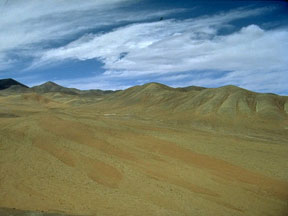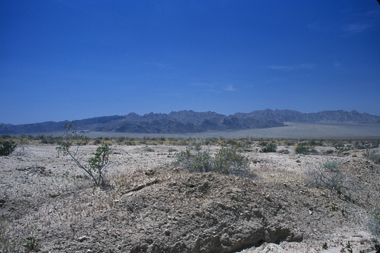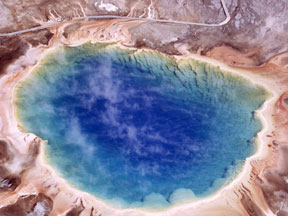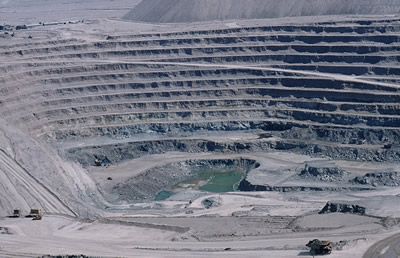Click on image for full size
Image courtesy of the European Southern Observatory, photograph by C. Madsen.
Life in the Atacama Desert
The Atacama Desert is in Chile in South America. It is one of the driest places on Earth. Somehow a few kinds of plants, animals, and microbes are able to live there. Even some people live and work in the Atacama Desert!
The Atacama is a very hard place for life to survive. How can anything live in such a dry desert? In some places, living things get water from fog that comes from the Pacific Ocean. Some types of algae, lichens, and cacti get their water that way. Some types of microbes live under rocks or even in tiny spaces within rocks. These "homes" protect the microbes from the heat and dryness.
Why would people live or work in a desert like the Atacama? Some of them work in mines. There were many silver mines here in the past. Today there are some very big copper mines in the desert. For many years, people mined a chemical called sodium nitrate in the Atacama. That chemical was used to make fertilizers and dynamite. There are some cities along the Pacific Ocean near the Atacama Desert. They are mostly ports. Ships come to the ports to carry metals and chemicals from mines to other places around the world.
Some of the people who live in the Atacama have an odd way of getting water. There is a village in northern Chile called Chungungo. People who live there use nets to "harvest" water from thick fog banks that roll in off the nearby Pacific Ocean!
It may seem strange, but people do astronomy in the Atacama Desert. They also do work related to space exploration! There are hardly any clouds and almost no light pollution in the Atacama. That makes it good for astronomy. The European Southern Observatory has several large telescopes in Chile. The dry soil of the Atacama is a lot like the surface of the planet Mars. Scientists sometimes test robots and sensors in this desert before sending them to Mars. Since even microbes are rare in the Atacama, it is a good place to test instruments that will be used to search for life on other worlds. Finally, many meteorites have been found in this desert.















